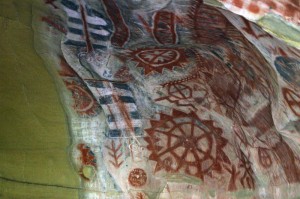 Native American art history provides us with a glimpse of the world that existed thousands of years ago. Native American art history can be traced back to over 10-thousand years before the beginning of what is known as the common era. For centuries, Native Americans have produced some of the most beautiful, captivating and most-discussed art the world has ever seen. Native American art history also illustrates the story of all the triumphs and tribulations experienced since the dawn of time.
Native American art history provides us with a glimpse of the world that existed thousands of years ago. Native American art history can be traced back to over 10-thousand years before the beginning of what is known as the common era. For centuries, Native Americans have produced some of the most beautiful, captivating and most-discussed art the world has ever seen. Native American art history also illustrates the story of all the triumphs and tribulations experienced since the dawn of time.
Native American Art History Origins
The origins of Native American art history began thousands of years before the first century. Native Americans create art as a way to worship the gods and express their love for nature. The earliest known piece in Native American art history was created more than 13-thousand years ago. A bone etched with an image of a walking mammoth and other cross-hatched designs discovered in Florida is the oldest know piece of art in the Americas.
Fast forward to the 19th century, a nearly 12-foot monolithic calendar stone was created in 1479. Native Americans gave birth to ledger art in the 1860’s. Several Native American artists were later featured as part of the World’s Fair in New York in 1939. In 2004, a national museum dedicated solely to Native American art history opened in Washington, DC.
Forms of Native American Art
When learning about Native American art history, it’s important to know about the wonderful and amazing forms of art that have been produced. Oil and sand painting, pottery and basket weaving all have an important and special place in Native American art history. Crafts, ceramics and wood carving are also part of the wide-ranging Native American art landscape.
Native American art and its history remains very culturally important. In 2009, Native American pottery was on exhibit in the White House. As time passes on, Native American art history will continue to change every day.